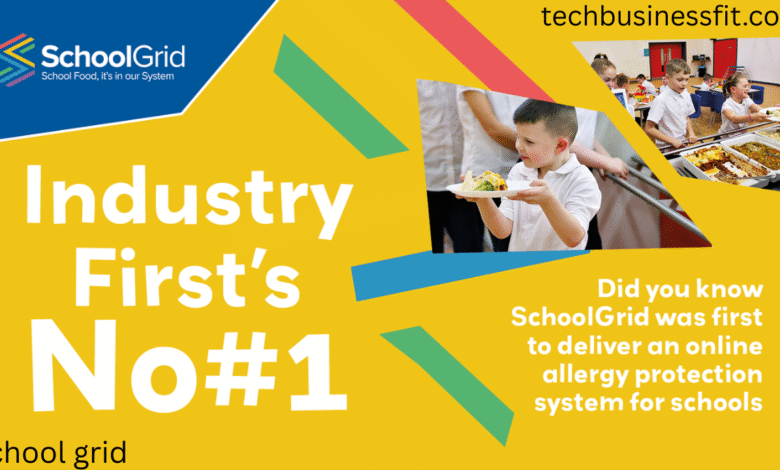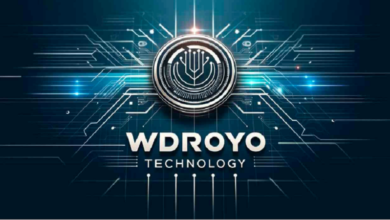Here’s your detailed long-form article on school grid, structured with multiple headings, keyword-rich phrasing, and natural flow, aiming for over 1000 words.

The modern educational environment is not only about academic excellence but also about ensuring students receive proper nutrition efficiently. School Grid is a school meal management system designed to simplify how schools, caterers, and parents handle meal planning, ordering, and tracking. It bridges the gap between administrative staff, kitchen teams, and parents, creating a streamlined approach to school dining.
From ordering meals in advance to monitoring dietary needs, School Grid transforms the traditional, paper-based lunch system into a digital, interactive, and highly organized platform. This saves time, reduces waste, and ensures every child gets the right meal, on time, every time.
How School Grid Works
At its core, School Grid is an online platform accessible through web and mobile devices. It provides a centralized interface where schools can upload menus, parents can pre-order meals, and kitchen staff can access real-time meal counts.
- Menu Management: Schools or caterers can create detailed menus, including descriptions, images, allergen information, and nutritional values.
- Parent and Student Access: Parents can log in, view the menu, and choose meals for their children days or weeks in advance.
- Kitchen Dashboard: Kitchen staff receive live updates on the number of meals to prepare each day, minimizing errors and ensuring accurate portions.
- Integration with Payments: Many schools integrate payment systems, allowing parents to pay for meals directly through the platform.
The entire process is automated, meaning less time spent on manual counting and more time focusing on quality meal preparation.
Benefits of School Grid for Schools
Schools face daily challenges in managing lunch services. School Grid provides a set of features that directly address these challenges:
- Efficiency in Ordering: Eliminates the need for teachers to take lunch orders in class each morning.
- Reduced Food Waste: Real-time data ensures kitchen staff prepare exactly what’s needed.
- Improved Accuracy: No more missed meals or incorrect orders due to lost paper slips.
- Better Allergen Control: The system tracks dietary needs, preventing allergen exposure.
- Reporting and Analytics: Schools can track popular meal choices, food waste statistics, and attendance-related trends.
This efficiency also frees up staff for more educational and administrative priorities.
Benefits of School Grid for Parents and Students
Parents gain more control and visibility over their child’s meals, ensuring nutrition and preferences are prioritized.
- Convenient Ordering: Parents can order meals from home or on the go.
- Health and Allergen Safety: Clear allergen and nutritional information helps families make informed choices.
- Budget Management: Payment systems allow parents to manage lunch budgets and avoid unexpected charges.
- Engaging for Students: Children can look forward to meals they’ve chosen, reducing food refusal and improving lunchtime satisfaction.
Students feel empowered knowing their lunch is ready and tailored to their tastes and needs
Caterers and Kitchen Teams – The Hidden Heroes
While schools and parents benefit from the front-end simplicity, caterers and kitchen teams experience significant operational improvements through School Grid.
- Real-Time Preparation Lists: Kitchen staff can see the exact number of each meal required for the day, categorized by year group or class.
- Reduced Overproduction: With accurate ordering data, kitchens no longer need to prepare extra “just in case” meals.
- Clear Allergen Alerts: Allergens are flagged prominently, ensuring safety for students with special dietary requirements.
- Simplified Menu Updates: Seasonal menus or last-minute ingredient changes can be updated instantly, and the changes reflect for all users.
By making kitchen operations data-driven, School Grid improves consistency and reduces stress during busy lunch hours.
Technology Behind School Grid
School Grid operates as a cloud-based platform, meaning there’s no need for schools to maintain expensive servers or complicated software installations. Features often include:
- Mobile-Friendly Interface: Parents and staff can access it from smartphones or tablets.
- Secure Login: Protects student data and payment information.
- Automatic Updates: Schools always have the latest version without IT headaches.
- Integration Capabilities: Can work alongside existing school management systems, attendance records, and payment gateways.
Security and ease of use are central to its success, making adoption smooth for even non-technical users.
Reducing Food Waste with School Grid
One of the most impactful aspects of School Grid is its ability to significantly cut down on food waste in schools. With accurate pre-ordering and real-time data, catering teams prepare meals according to actual demand, not estimates.
- Exact Numbers: No surplus meals sitting untouched.
- Better Stock Control: Ingredient orders align with menu needs.
- Environmental Impact: Less waste means reduced landfill contribution.
This eco-friendly approach not only saves money but also aligns with sustainability goals that many schools now actively pursue.
Cost Savings and Return on Investment
While implementing a digital meal system may seem like an expense, School Grid quickly pays for itself:
- Labor Savings: Teachers no longer spend time on daily lunch counts.
- Lower Waste Costs: Less wasted food means lower food purchasing expenses.
- Streamlined Payments: Reduces administrative work for finance teams.
- Improved Parent Engagement: Happy parents are more likely to participate in paid school meal programs.
For schools on tight budgets, these savings can be redirected toward educational resources and student support programs.
Future of School Meal Management
As schools continue to embrace digital solutions, School Grid represents the future of meal management. Potential upcoming innovations include:
- AI-Powered Predictions: Forecasting meal popularity to plan menus more effectively.
- Automated Nutritional Tracking: Helping parents and schools monitor balanced diets over time.
- Integration with Health Apps: Linking meals to student wellness programs.
- Multi-Language Menus: Catering to diverse school communities.
The possibilities extend far beyond just ordering lunch – they pave the way for a fully personalized, data-driven dining experience in schools.
Conclusion
School Grid is more than just a lunch ordering tool – it’s a complete ecosystem for school meal management. By connecting parents, schools, and catering teams through a single platform, it ensures efficiency, accuracy, and satisfaction for all stakeholders.
In an era where time, resources, and sustainability are crucial, School Grid delivers measurable benefits that go beyond convenience. Whether it’s reducing waste, protecting students from allergens, or saving valuable staff time, the system is reshaping how schools approach meal services.
For schools aiming to modernize their operations and improve student dining experiences, School Grid is not just a choice – it’s the future.
Meta Title: School Grid – Smart School Meal Management & Ordering System for Schools
Meta Description: Discover how School Grid transforms school meal management, streamlines ordering, reduces waste, and ensures allergen safety for students, parents, and catering teams.
Category Suggestions: Education, Technology




